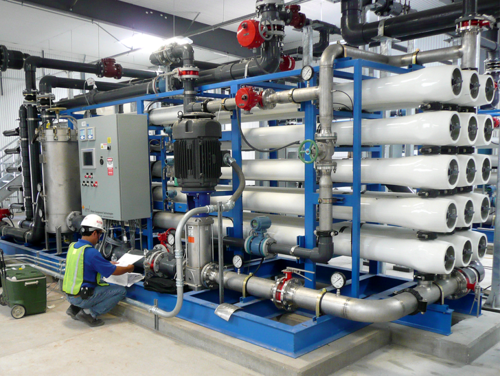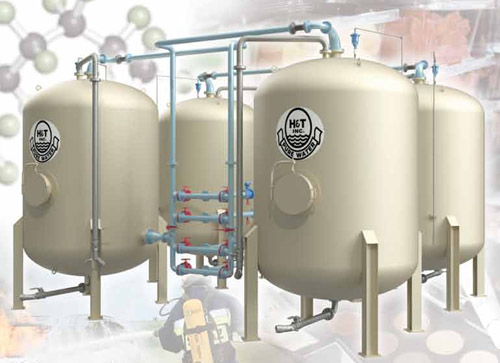Advanced Techniques for Reliable PFAS Contamination Removal
The relentless difficulty of PFAS contamination requires the expedition of advanced removal approaches that can efficiently deal with these hazardous materials. Innovative modern technologies, such as sophisticated oxidation procedures and different adsorption strategies, have arised as promising options in mitigating PFAS from influenced settings.
Understanding PFAS Qualities
Although per- and polyfluoroalkyl substances (PFAS) have been commonly used in different commercial and consumer items because of their special residential or commercial properties, their persistence in the environment presents substantial difficulties to public health and wellness and safety and security. PFAS are a group of artificial chemicals characterized by a carbon-fluorine bond, one of the strongest chemical bonds recognized, which contributes to their outstanding stability and resistance to degradation. This security allows PFAS to build up in the environment and living organisms, causing potential negative wellness results.
These exact same buildings add to their environmental persistence, as PFAS do not easily break down through all-natural procedures. Recognizing the chemical properties of PFAS is essential for developing efficient approaches to handle and mitigate their ecological impact.
Ingenious Removal Technologies
The determination of PFAS in the atmosphere has actually spurred the advancement of ingenious removal innovations aimed at efficiently removing these contaminants from influenced ecological communities. Amongst one of the most appealing methods are advanced oxidation procedures (AOPs), which make use of powerful oxidants to break down PFAS compounds right into much less dangerous materials. AOPs can be customized to target particular PFAS structures, boosting their efficiency.
An additional arising modern technology is using adsorption media, such as triggered carbon and ion exchange resins, which can uniquely capture PFAS from polluted water. These products have actually shown substantial removal effectiveness, although periodic substitute and regeneration are necessary to preserve performance.
Membrane layer filtration strategies, including reverse osmosis and nanofiltration, are additionally getting grip in PFAS remediation. These approaches can efficiently divide PFAS from water, supplying a viable option for treating polluted resources. Furthermore, thermal therapy techniques, such as incineration, can decay PFAS into safe byproducts, though they need mindful administration to regulate emissions.
Jointly, these innovative remediation modern technologies represent considerable advancements in the continuous fight against PFAS contamination, providing numerous strategies to bring back damaged atmospheres and secure public health.

Bioremediation Strategies
Bioremediation methods provide a promising strategy to attending to PFAS contamination by utilizing the natural capacities of bacteria to deteriorate these persistent substances (m270 waste management). This technique involves making use of bacteria, fungis, and various other microorganisms that can metabolize or transform PFAS substances right into much less dangerous results
Current improvements in molecular biology and ecological microbiology have enhanced our understanding of microbial areas and their possible duties in PFAS deterioration. Scientists are actively checking out particular stress of microorganisms, such as Pseudomonas and Bacillus, which have actually demonstrated the capacity to damage down certain PFAS substances.
Sitting bioremediation methods, where bacteria are stimulated directly in polluted environments, can be especially effective. This method usually involves the application of nutrients or electron contributors to advertise microbial development and activity. Furthermore, ex lover situ approaches, such as bioreactors, allow for controlled problems that can maximize degradation rates.
In spite of website link the assurance of bioremediation, challenges stay, including the complicated nature of PFAS substances and the need for substantial area testing - m270 waste management. Proceeded research and advancement will certainly be essential to improve these techniques and analyze their effectiveness in varied ecological contexts
Adsorption and Purification Methods
Dealing with PFAS contamination commonly entails employing adsorption and filtering techniques, which are made to remove these consistent chemicals from water and dirt. Amongst the different strategies, triggered carbon adsorption is commonly used because of its high surface area and porosity, allowing efficient capturing of PFAS molecules. Granular activated carbon (GAC) systems are particularly preferred for dealing with huge quantities of infected water, while powdered triggered carbon (POLITICAL ACTION COMMITTEE) can be utilized for smaller-scale applications.
Ion exchange resins also reveal pledge in PFAS removal, functioning by exchanging PFAS ions with much less unsafe ions in the water. This approach has demonstrated performance in focusing PFAS substances, facilitating their subsequent elimination. In addition, membrane layer filtering methods, such as reverse osmosis and nanofiltration, operate by utilizing semi-permeable membranes to read more separate PFAS from water, effectively reducing their focus.
While these approaches work, they need to be very carefully chosen based on the details PFAS compounds present and the ecological context. Constant improvements in materials science and design are causing the advancement of unique adsorbents and filtering systems that improve removal efficiencies and reduce functional prices, thus boosting total remediation efforts.
Regulatory and Plan Factors To Consider
How can effective regulative frameworks boost the monitoring of PFAS contamination? Detailed plans are necessary to make sure a collaborated and robust action to the challenges postured by per- and polyfluoroalkyl substances (PFAS) Laws can develop clear standards for monitoring, reporting, and remediating PFAS-contaminated websites, cultivating accountability among markets and public entities. (m270 waste management)

In enhancement, economic incentives and gives can be incorporated into policies to urge the adoption of sophisticated removal technologies. Policymakers must additionally prioritize r & d, making sure that emerging methods my website for PFAS removal are validated and carried out successfully.
Furthermore, public understanding and involvement are essential parts of any type of governing method, empowering areas to support for their health and wellness. Eventually, a well-structured governing environment will certainly not just enhance the management of PFAS contamination but additionally advertise lasting practices that safeguard future generations.
Conclusion
In summary, the complexity of PFAS contamination requires the fostering of advanced remediation methods. Ingenious modern technologies such as innovative oxidation processes, adsorption techniques, and membrane filtering have actually shown substantial efficiency in eliminating these relentless compounds from polluted water sources. In addition, governing frameworks must evolve to sustain the execution of these innovations, guaranteeing secure and efficient management of PFAS toxins. Proceeded r & d in this field remain vital to dealing with the challenges presented by PFAS contamination.